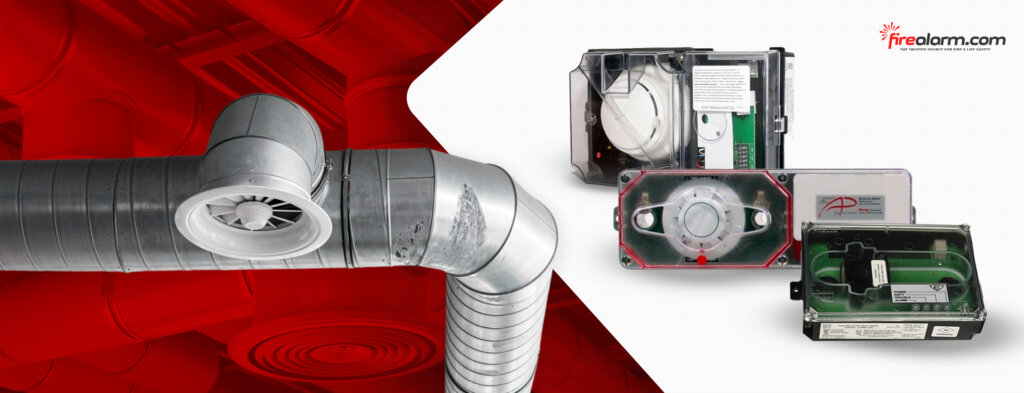
The most dangerous aspect of fire is the inhalation of toxic smoke and gases. Smoke can be transferred to different areas of a building though HVAC systems. Thus, these systems must be shut down to decrease the likelihood of injury, panic, or blocked escape routes. As such, duct detectors provide early smoke detection within air ventilation systems, so actions can be taken to shut down these systems and prevent the spread of smoke before it occurs in dangerous quantities. To ensure that duct detectors are performing their job properly, it is important to know the NFPA code requirements for duct detectors.
According to Chapter 17, Initiating Devices, of the NFPA 72, Duct detectors can serve multiple functions. To start, duct detectors are installed on the supply side of air-handling systems to prevent the recirculation of dangerous quantities of smoke. Secondly, smoke detectors are used to initiate the operation of fire doors, or equipment to control smoke spread. Finally, duct detectors are often used to initiate the operation of smoke dampers within ducts. The code requirements maintain that duct detectors should be placed within 5 feet of your damper.
The control of smoke spread has additional nuance to consider when dealing with stairwells and air vents. For example, you must ensure that your detector is listed for the air velocity, temperature, and humidity present in your duct system. Often, you will need devices that can withstand higher temperatures and air velocities than normal in this type of application. Detectors like the Kidde FX-PDD can operate at temperatures up to 120° F and air velocities up to 4,000 ft/min.
Additionally, air must be brought in to pressurize stairwells, which is used to push smoke away. Duct detectors ensure that the air being used for pressurization has not been contaminated with toxic smoke. Moreover, the NFPA 101 states, “the pressure difference across the door opening shall not exceed that which allows the door leaves to begin to be opened by a force of 30lbs or more.” This means that the stairwell will be pressurized, but not at an intensity that prevents the doors from being opened.
Keep Reading: What Are Emergency Control Function Interfaces? >>
When installing duct detectors, owners should be aware of the standards delineated in the NFPA 90A. The scope of NFPA 90A involves the establishment, setup, usage, and upkeep of air conditioning and ventilation systems, which encompass filters, ducts, and linked apparatus. Included in this list are duct detectors. As such, certain requirements must be met to meet your minimum compliance standards.
According to the NFPA, detectors should be located where air enters or leaves the duct system, and should be “installed in a way as to obtain a representative sample of the airstream.” (17.7.6.5.2) Furthermore, you should also be mindful to install your detector in a way that allows verification of airflow from the duct to the detector. After, you may easily test detectors that employ sampling tubes to collect air from the duct.
The placement of your duct detector depends on your building and the capacity of your air circulation system. The key standards listing in the NFPA 90A specify that duct detectors shall be located as follows:
According to the NFPA, your duct detectors should be visually inspected at least twice a year. Secondly, you should clean your smoke detector every six months or as required to prevent false alarms and ensure accurate detection. In fact, the best ways to clean your detectors are by using dry compressed air, or to vacuum the inside of the detector head.
Needless to say, you should also test your detectors whenever you perform your inspections to check on their functionality. The best way to do this is by using a smoke entry test, or a remote test switch. Remote test switches or stations can save you the laborious task of having to access those hard-to-reach spaces. Remote switches can also perform alarm tests, trouble indication, and reset capability from a remote location.
Read More: When to Replace or Upgrade Your Fire Alarm System >>
It is important to be aware of the codes and standards set by the NFPA, so you don’t forget to regularly inspect your fire protection system. Furthermore, if changes are made to your ventilation system, you must be aware of how that will affect the placement and maintenance of your duct detectors. As always, make sure you also contact your local authority having jurisdiction to ensure you are compliant with all of your local fire codes. Additionally, determine if there are additional compliance requirements or governing codes, such as those set by other parties like the International Code Council.
$117.49
$179.99
$206.99
$187.49